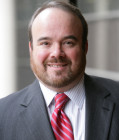As debates over ObamaCare focus on the “individual mandate,” a remarkable part of health reform is moving forward out of the limelight – the massive investment in community health clinics in impoverished rural and urban communities across the country. If community clinics proliferate and grow as planned, not only will millions of poor people get care they need and cannot easily access otherwise, it should become easier to control rising costs in the U.S. health care system as a whole.
A Major Expansion to Help the Poor
About twelve hundred community health centers now exist in rural communities and urban neighborhoods; fifty-one percent of their patients are white and one-fifth African Americans. New Obama administration funding promises to open many additional clinics and help all centers improve their facilities to serve millions of additional patients.
- The new funding far exceeds the $4 billion spent on Obama’s “race to the top” school reforms, because the 2009 Stimulus allocated $2 billion to community health centers and ObamaCare promises $11 billion more.
- If fully implemented, expanded funding will allow clinics to serve more than twice as many people by 2019 – an estimated 36 million, up from 17.1 million served in 2008. Right now, many are uninsured, and even those on Medicaid (insurance for the indigent) cannot always find nearby facilities to meet their needs.
How the New Policies Will Work
Community health clinics serving the poor are poised to help national health reform succeed and become a stable, cost-effective part of U.S. health care delivery, in more ways than one:
- Expanded funding for additional and existing community health clinics will enable them to build staffs and serve more people. In addition, the Affordable Care Act prohibits private insurers who offer plans on the new state-level health exchanges from directing patients away from community clinics or under-paying them. Millions of Americans who buy subsidized health coverage on the exchanges will be able to use the clinics, giving them an additional source of ongoing funding.
- Community clinics provide multiple coordinated services – right now, to many uninsured poor people as well as to those with coverage from Medicaid. For many, community health centers are their only source of care for medical and dental care, mental health treatment, and an array of other services. This makes community clinics pioneers in creating efficiencies through teamwork – a departure from the inefficient traditional model where patients get different services from many providers and insurance companies pay separate reimbursements.
- The spread and expansion of community health centers will be important for the success of the Affordable Care’s expanded health coverage to millions who are currently uninsured, because fewer private doctors are accepting Medicaid to treat sick people with low incomes who do not have employer insurance. Critics of ObamaCare sometimes claim there will not be enough doctors to treat the newly insured patients, but community clinics can help meet the demand.
- Additional community clinics should also “bend the cost curve” by providing good care at a better price. A 2012 study by Stanford researchers found that community health centers delivered care as good or better than private practitioners for 18 conditions, including congestive heart failure, adult asthma, and high blood pressure. Yet clinics also reduce costs by heading off illnesses before people go to costly emergency rooms. Compared to the uninsured nationally, people who get care at community clinics are significantly more likely to see a general practitioner annually and to receive the kind of preventive care (from blood pressure and cholesterol monitoring to Pap smears and breast exams for women) common in more affluent communities. By delivering preventive care under “best practice” guidelines, community clinics are projected to reduce overall health costs by $181 billion over ten years.
Keeping People Well Creates Good Jobs Too
Quality, affordable health care is the main point, of course; yet clinics also stimulate job creation and foster economic development. Research shows that each dollar invested in health centers generates eight dollars in new economic activity in the surrounding community, producing nearly 132,000 jobs. Many of these are non-skilled jobs in communities with high unemployment, so the new jobs will improve lives and reduce welfare costs to the taxpayer.
Health centers also are an indispensable draw for medical personnel much needed in struggling communities – attracting professionals ranging from physicians and dentists to nurse practitioners and social workers. The Affordable Care Act invests $1.5 billion in scholarships and educational loan assistance programs to make it easier to attract 16,000 additional professionals to practice in underserved communities. Some of these health providers will serve and move on, but others will build lives and raise families in their new communities.
Will This Valuable Reform Survive?
Partisan budget wars since 2010 threaten community clinics. House Republicans recently forced $600 million in cuts to existing centers and blocked most planned new investments. The Obama administration had to juggle funds just to preserve existing capacity.
If it survives the swirling political headwinds, the community clinic revolution now underway will prove remarkable in the annals of U.S. social policy. Scholars tend to take it for granted that programs targeted on the poor are hard to expand – and if today’s House Republicans have their way, this may prove true. But bipartisan support for community clinics has been there in the past – under the GOP presidency of George W. Bush, for example. It remains to be seen whether a modicum of cooperation can remerge to protect this promising new initiative to expand vital and cost-effective health care for the poor.
